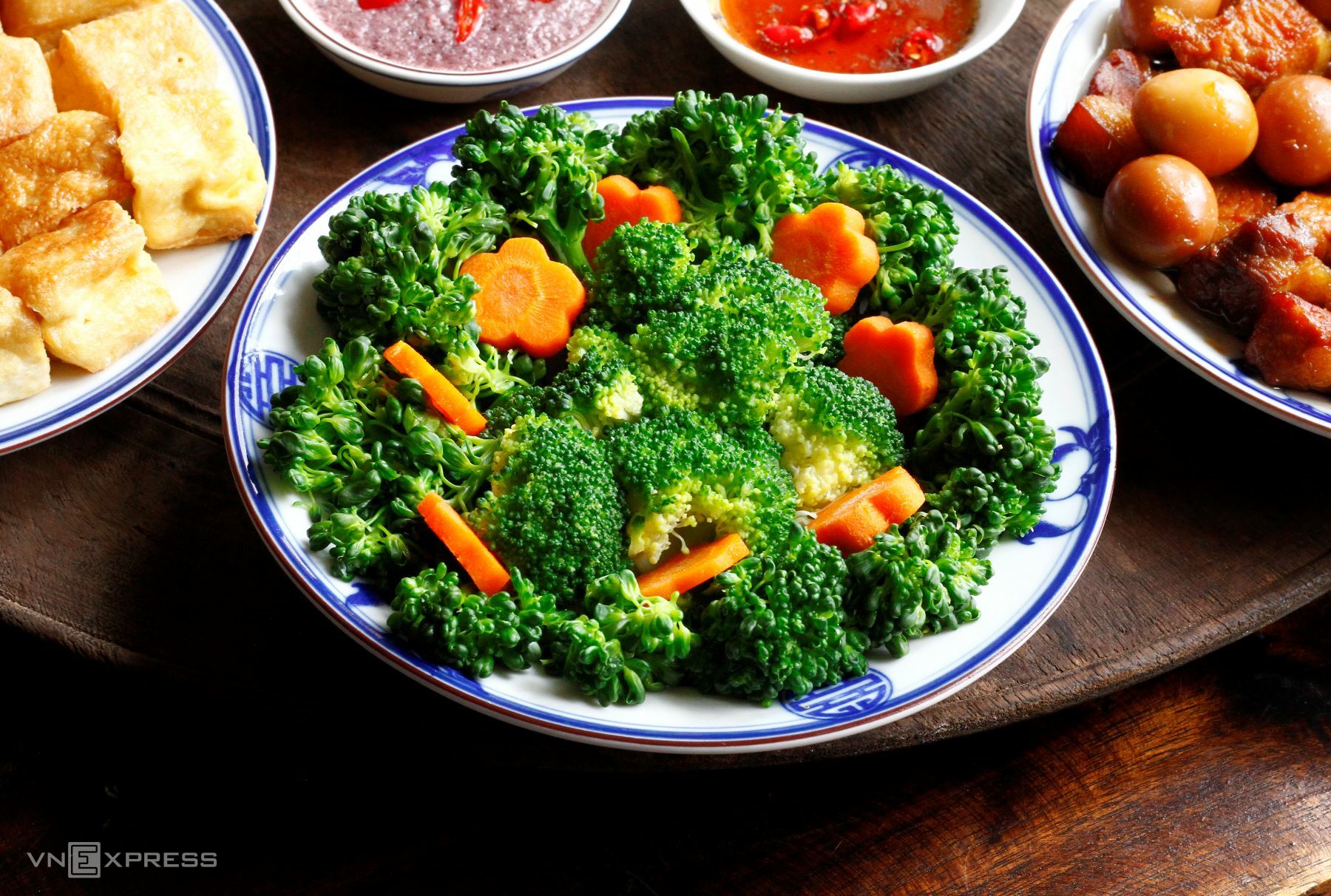Microwave ovens cook vegetables by emitting electromagnetic waves at a frequency of approximately 2.45 GHz, causing water molecules within the vegetables to vibrate and generate heat from the inside out.
This method differs from boiling, which transfers heat from the outside in and can leach nutrients into the boiling water. Vitamin C is particularly sensitive, easily degrading at temperatures above 70°C, so longer exposure leads to greater loss. By shortening the cooking process and using less water, microwaving helps minimize nutrient loss.
 |
Illustrative photo: Bui Thuy |
Research in the Journal of the Science of Food and Agriculture (UK) indicates that microwaving vegetables with minimal water retains 75-90% of their vitamin C, significantly more than boiling (45-60%) or traditional steaming (60-75%). Similar findings were published in Critical Reviews in Food Science and Nutrition (USA).
Beyond vitamin C, studies show that proper microwaving preserves various other nutrients. Heat-sensitive antioxidants like flavonoids and polyphenols are retained at levels 15-30% higher than with boiling. In cruciferous vegetables, glucosinolates, beneficial for liver health and anti-inflammatory properties, are better preserved, with losses only half those seen with boiling. Folate (vitamin B9), essential for blood formation, is also significantly maintained due to the shorter cooking time and minimal water usage.
A study by the International Nutrition Institute on carrots found that boiling led to a 25% loss of carotenoids, the orange pigment beneficial for eye health and antioxidant activity. Microwaving resulted in almost no carotenoid reduction and even a slight increase due to the breakdown of cell structures, making the nutrients more readily absorbed.
Microwaved vegetables maintain a brighter green color. Boiling exposes vegetables to prolonged heat, causing hydrogen ions from the hot water to replace magnesium ions in chlorophyll molecules, resulting in a dull grayish-green or brownish-yellow pheophytin. Microwaving significantly reduces cooking time and water usage, minimizing this chlorophyll transformation.
Microwaved vegetables not only retain their color but also their sweetness. This is because less natural sugar and organic acids dissolve into the water, resulting in a richer, more natural flavor. The rapid, internal cooking method also minimizes cell breakdown, maintaining a tender yet crisp texture.
For effective microwaving, use heat-resistant glass or ceramic bowls, avoiding low-quality plastic. Add minimal water (1-2 teaspoons) and cover the bowl with a slightly vented lid. After microwaving, let the vegetables rest inside for about a minute to allow even heat distribution and thorough cooking without overcooking.
Not all vegetables microwave equally. Here's a guide based on USDA (USA) recommendations:
As a general rule, microwave in short bursts, checking for doneness, to avoid drying out or overcooking. : Broccoli, kale, and asparagus are best suited for microwaving. After rinsing and draining, place them in a glass bowl, add 1-2 teaspoons of water, partially cover, and microwave for 2-3 minutes. Add a little olive oil afterward to enhance the absorption of fat-soluble vitamins.
Peas, cauliflower, and cabbage: These denser vegetables should be chopped, sprinkled with water, and microwaved at medium power for 3-4 minutes, stirring once for even cooking. : Green amaranth, spinach, and slender amaranth: These leafy greens cook quickly but can become mushy. Microwave at medium power for about 2 minutes, stir gently, and microwave for another 30 seconds to 1 minute.
Carrots and bell peppers: These vegetables benefit from microwaving, retaining both color and carotenoids. Microwave at high power for 3.5-4 minutes. Add a teaspoon of olive oil afterward to enhance carotenoid absorption.
Potatoes, onions, and tomatoes: These are not recommended for microwaving. Potatoes are better baked or steamed; onions are best sauteed; and tomatoes are best eaten raw or lightly cooked to maximize lycopene benefits.
Bui Thuy












